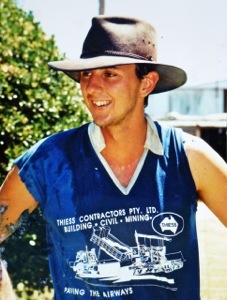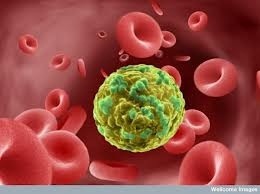 Recently I have been reviewing research coming out of Israel which concluded that manipulating the thyroid function can possibly offer a new/novel treatment for cancer. Well its neither new or novel as Dr. Jurkovic, a Slovak oncologist, had been treating cancer patients through thyroid manipulation for over 3 decades. I came across his work a few months ago, and the new research which independently validates his results renewed my interest.
Recently I have been reviewing research coming out of Israel which concluded that manipulating the thyroid function can possibly offer a new/novel treatment for cancer. Well its neither new or novel as Dr. Jurkovic, a Slovak oncologist, had been treating cancer patients through thyroid manipulation for over 3 decades. I came across his work a few months ago, and the new research which independently validates his results renewed my interest.
The thyroid gland basically controls the body’s metabolism and metabolism is crucial for glucose hungry cancer cells to thrive and proliferate. I recently had my thyroid hormone levels checked and to my surprise, my TSH (Thyroid Stimulating Hormone) levels were 4x higher than control tests I had done before my cancer. That’s no coincidence, I am sure, but back to the story:
Dr. Kamil Jurkovic, a Slovak oncologist, had the desire to continue to treat terminal cancer patients, for whom traditional medicine had no more options. He experimented with off label drugs and eventually developed what looks like a very effective protocol for the treatment of cancer. He treated over 1800 patients during his career, and methodically documented his treatments and followed patients for over a decade after treatment. His published results are impressive to say the least, and his OS results beat anything that modern chemo treatments today can achieve. His case studies are also full of complete remissions, something rarely seen with traditional chemo treatments.
The protocol that Dr. Jurkovic devised, was quite simple. The core of his treatment revolves around the Thyroid. He prescribed a standard drug (Carbimazol) used to treat hyperthyroidism in order to retard the thyroid function and thus disrupt the metabolism. He also used pancryatic enzymes tripsin and chemotrypsin to treat ascites related problems in advanced cancer and included drugs to stimulate the immune system (Norga).
Unfortunately Dr. Jurkovic made a fatal mistake. He discovered that his treatments were more effective without chemotherapy. Advocating “no chemo” was too much for the Slovak Authorities, despite his impressive results. He was persecuted for many years and was eventually formally charged after the death of a terminal patient he was treating. He was sentenced and lost his medical license as result. Interestingly the family of the cancer patient did not wish to press charges, but the government decided to prosecute anyway. I have seen the same story repeated many times before, where potentially effective treatments are suppressed to preserve the chemo culture.
Fortunately Dr. Jurkovic legacy was not lost and other oncologists have adopted his protocols, though most keep a low profile. I intend to explore this treatment further as it is relatively safe, provided the thyroid is closely monitored. It can also be done in conjunction with chemo. Dr. Jurkovic protocols are well documented and any GP could prescribe the treatment, however I was lucky to find and oncologist with a great deal of experience with this protocol and intend to pursue the treatment further.
I also went to the effort of contacting a few of Dr. Jurkovic’s former patients. I found two. Both were terminal and sent home to die before they started the thyroid treatment. One had pancryatic, the other colorectal cancer. Both were alive 12 and 14 years after treatment and were cancer free. I don’t know of any oncologist who can claim to have cured even a single terminal cancer patient, and here I came across 2 without too much difficulty.
Dr. Jurkovic’s website jurkovic.sk has been offline for quite some time, however a lot of his work and publications can still be found on archive.org. This is a good place to start:
BLOCKING TUMOUR METABOLISM TREATMENT OF MASTOPATHIA FIBROSA
Resources
Blocking Thyroid Hormones Induced MAPK Activation -Novel Target for Therapy In Myeloma
Thionamides Inhibit the Transcription Factor Nuclear Factor-κB by Suppression of Rac1 and Inhibitor of κB Kinase α
Musli Clinic









